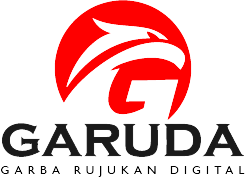MENILAI KEMAMPUAN BERBICARA BAHASA INGGRIS SISWA MELALUI PODCAST
DOI:
https://doi.org/10.34127/japlj.v1i1.477Abstract
Menilai keterampilan berbicara Bahasa Inggris siswa adalah hal yang rumit bagi guru, apalagi ada keterbatasan aktu dan kesempatan siswa untuk mempraktikan kemampuan mereka di kelas. Kedekatan siswa dengan teknologi harusnya dimanfaatkan oleh guru untuk menjadikannya kegiatan alternatif agar kemampuan berbicara Bahasa Inggris siswa dapat meningkat dan memungkinkan guru untuk menilai kemampuan mereka tanpa batas ruang dan waktu. Podcast yang saat ini tengah populer di kalangan anak muda bisa menjadi salah satu media alternatif yang dapat dipergunakan karena pembuatannya cukup sederhana dengan keterbukaan siswa terhadap teknologi. Artikel ini diharapkan mampu menjadi acuan dan referensi guru-guru dalam menggunakan Podcast dalam kegiatan belajar-mengajar. Sejalan dengan hasil penelitian-penelitian sebelumnya, Podcast menjadi media yang dapat meningkatkan kemampuan berbicara siswa dalam Bahasa Inggris dan memudahkan guru dalam melakukan penilaian.
Kata Kunci : Kemampuan Berbicara Siswa, Bahasa Inggris, Penilaian, Podcast, Teknologi.
References
Abrams, Z. I. (2003). The effect of synchronous and asynchronous CMC on oral performance in German. The Modern Language Journal, 87(2), 157–167.
Alfa, R.R. (2020). Using Podcast as Authentic Materials to Develop Students’ Speaking Skill. JELLT Vol.4, No.1 – 2020
Arnold, N. (2007). Reducing foreign language communication apprehension with computer–mediated communication: A preliminary study. System, 35(4), 469–486
Burns, A. (2012). A holistic approach to teaching speaking in the language classroom. In M. Olofsson (Ed.), Symposium 2012 (pp. 165–178). Liber.
Bustari, A. and Samad, I. (2017). The use of podcasts in improving students’ speaking skill. Journal of English Language and Education. Vol 3. No. 2, December 2017.
Bygate, M. (2001). Speaking. In R. Carter & D. Nunan (Eds.), The Cambridge guide to teaching English to speakers of other languages (pp. 14–20). Cambridge University Press. https://doi.org/10.1017/CBO9780511667206.003
Coombe, C., & Hubley, N. (2011). Fundamentals of language assessment. Mexico Documents. https://vdocuments.mx/ fundamentals-of-language-assessment.html
Dudeney, G., & Hockly, N. (2007). How to teach English with technology. Harlow, England: Pearson Longman.
Erben, T. (2013). Calling all foreign language teachers. Hoboken: Taylor and Francis.
Fulcher, G. (2018). Assessing spoken production. In J. I. Liontas, tesol International Association, & M. Del-liCarpini (Eds.), The tesol encyclopedia of English lan-guage teaching (pp. 1–6). John Wiley & Sons. https://doi. org/10.1002/9781118784235.eelt0364
Ginther, A. (2012). Assessment of speaking. In C. A. Chapelle (Ed.), The encyclopedia of applied linguistics. Blackwell Publishing. https://doi.org/10.1002/9781405198431. wbeal0052
Green, A. (2013). Exploring language assessment and testing: Language in action. Routledge. https://doi. org/10.4324/9781315889627
Introductory Guide to the Common European Framework of Reference (CEFR) for English Language Teachers. Cambridge University Press 2013.
Lado, R. (1961). Language testing: The construction and use of foreign language tests. Longman.
Li, M., et al. (2015). Past, present, and future of podcasting in higher education. In Exploring learning & teaching in higher education (pp. 305–330). Springer.
Mauranen, A. (2006). Spoken discourse, academics and global English: A corpus perspective. In R. Hughes (Ed.), Spoken English, tesol and applied linguistics: Challenges for theory and practice (pp. 143–158). Palgrave Macmillan. https://doi.org/10.1057/9780230584587_7
North, B., Ortega, A., & Sheehan, S. (2010). A Core Inventory for General English. British Council/EAQUALS (European Association for Quality Language Services).
O’Bannon, B. W. et al. (2011). Using podcasts to replace lecture: Effects on student achievement. Computers & Education, 57(3), 1885–1892.
O’Neil, J. (1992). Putting performance assessment to the test. Educational Leadership, 49(8), 14–19.
Orey, M. (2010). Bloom’s taxonomy. Emerging perspectives on learning, teaching, and technology. The Global Text Project. Zurich, Switzerland.
Overbaugh, R. C., & Schultz, L. (2010). Updated Bloom’s Taxonomy. Bloom’s Taxonomy. https://www.odu.edu/content/dam/odu/col-dept/teaching-learning/docs/Bloom’staxonomy-handout.pdf.
Ramli, A. M. & Kurniawan, E. H. (2017). The use of podcast to improve students’ listening and speaking skills for EFL learners. Proceedings of the International Conference on English Language Teaching (ICONELT 2017): Advances in Social Science, Education and Humanities Research Vol. 145, 247-252, doi:10.2991/iconelt-17.2018.42
Riazi, A. M. (2010). Evaluation of learning objectives in Iranian high-school and pre-university English textbooks using Bloom’s taxonomy. ESL-EJ. The Electronic Journal for English as a Second Language, 13(4), Retrieved from http:// www.tesl-ej.org/wordpress/issues/volume13/ej52/ej52a5/
Richards, J. C., & Rodgers, T. S. (2001). Approaches and methods in language teaching (2nd ed.). Cambridge University Press. https://doi.org/10.1017/CBO9780511667305
Rosell–Aguilar, F. (2005). Task design for audiographic conferencing: Promoting beginner oral interaction in distance language learning. Computer Assisted Language Learning, 18(5), 417–442.
Salmon, G., & Nie, M. (2008). Doubling the life of iPods. In G. Salmon & P. Edirisigha (Eds.). Podcasting for learning in universities (pp. 20-32). New York, NY: Open University Press.
Shaaban, K. (2005). Assessment of young learners. English Teaching Forum, 43(1), 34–40.
Shield L., & Kukulska-Hulme, A. (2008). Special issue of ReCALL on Mobile Assisted Language Learning. Cambridge University Press.
Sze, P. (2006). Developing students’ listening and speaking skills through ELT podcasts. Educational Journal, 34(2), 115–134.
Thorne, S. L., & Payne, J. S. (2005). Evolutionary trajectories, internet–mediated expression, and language education. CALICO Journal, 22(3), 371–3.
Yorke, M. (2003). Formative assessment in higher education: Moves towards theory and the enhancement of pedagogic practice. Higher Education, 45(4), 477–501. https://doi. org/10.1023/A:1023967026413




